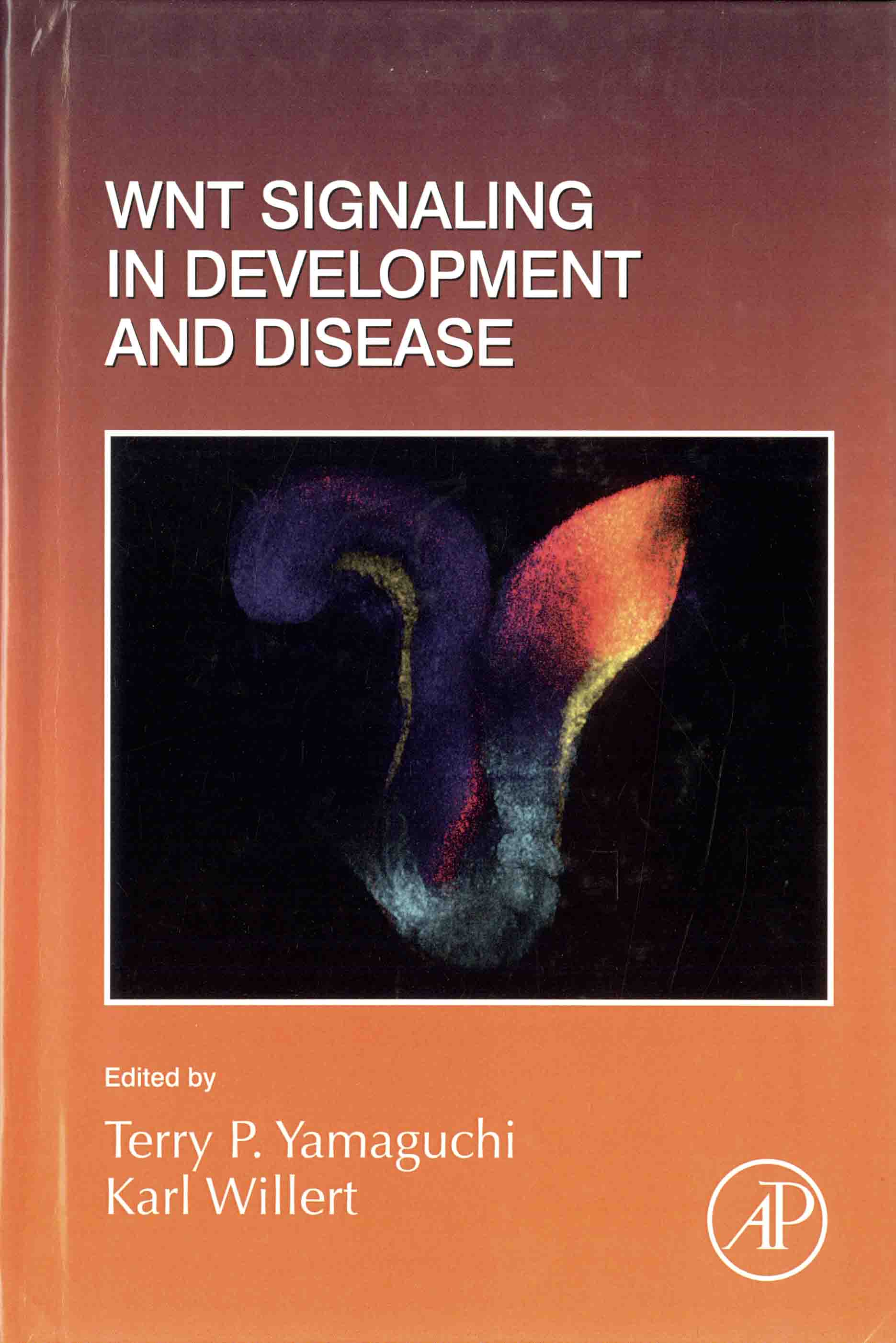 |
Current topics in developmental biology. Volume 153, Wnt signaling in development and diseas / edited by Terry P. Yamaguchi, Karl Willert. -- Cambridge, MA : Eslevier, 2023. – (58.12/C976/v.153) |
Contents
Contributors
Preface
1. The logistics of Wnt production and delivery
1. Wnt production and delivery: A complex logistical problem
2. Lipidation
3. Glycosylation
4. Progression through the secretory pathway
5. Beyond Wls
6. Transport and gradient formation
7. Wnt interactions with HSPGs and glypicans
8. Other means of shielding the Wnt lipid in the extracellular space
9. Wnts reach their receptors: Handover and initiation of signaling
10. How a lipidated morphogen came to be during evolution
Acknowledgments
References
2. Visualizing WNT signaling in mammalian systems
1. Introduction
2. Imaging individual players at the molecular level
3. Imaging signaling output at the cellular level
4. Discussion and outlook
Acknowledgments
References
3. Wnt signaling and the regulation of pluripotency
1. Introduction
2. The essentials of Wnt signaling
3. Methods to manipulate Wnt signaling
4. Introduction to pluripotency
5. Regulation of pluripotency by signal transduction pathways
6. Transcriptional regulation of pluripotency
7. Naive and primed and in between
8. Wnt signaling in reprogramming
9. Self-organization of PS cells
0. Conclusion
References
4. Wnt signaling in stem cells during development and cell lineage specification
1. Overview of Wnt/13-catenin signaling
2. The role of Wnt/I]-catenin signaling during embryonic development
3, Wnt/I]-catenin signaling and pluripotency of ESCs (halve vs primed)
4. Positive and negative regulators of Wnt signaling during embryonic development and stem cell maintenance
5. Wnt/I]-catenin dependent directed differentiation protocols of embryonic stem cells to specific lineages in vitro
6. Conclusions and perspectives
Acknowledgments
References
5. The role of Wnt signaling in the development of the epiblast and axial progenitors
1. Introduction
2. Overview of the Wnt/l}-catenin pathway
3. Wnts and the pluripotent epiblast
4. Role of Wnts in gastrulation
5. Closing remarks
References
6. Role of Wnt signaling and planar cell polarity in left-right asymmetry
1. Canonical Wnt signaling regulates the formation of the node, the left-right organizer
2. Non-canonical Wnt signaling and planar cell polarity determines the tilt of motile cilia at the node
3. Canonical Wnt signaling in establishing asymmetric nodal activity at the node
4. Conclusions
Acknowledgments
References
7. Non-canonical WNT5A-ROR signaling: New perspectives on an ancient developmental pathway
1. A brief history of canonical and non-canonical WNT pathways
2. Emergence of WNTSA-ROR signaling as a major non-canonical WNT pathway
3. Robinow syndrome as a disorder of WNT5A-ROR signaling
4. Molecular insights from Robinow syndrome and related disease mutations
5. Growing connections to cancer metastasis
6. Cell biological functions of WNTSA-ROR signaling
7. Concluding remarks
Acknowledgments
References
8. The role of Wnt signaling in Xenopus neural induction
1. Introduction
2. The arising of embryonic signaling centers
3. The Wnt pathway discovery and its impact on X. laevis embryogenesis
4. The BMP signaling pathway and the neural default model
5. WNT morphogen activity and its impact on Xenopus AP embryonic neural patterning
6. Concluding remarks
Acknowledgments
References
9. Wnt regulation of hematopoietic stem cell development and disease
1. Hematopoietic stem cells--The source of our blood and immune cell pool
2. In vivo models for hematopoietic stem cell development
3. Wnt signaling
4. Wnt signaling in HSC development and homeostasis
5. Wnt signaling and hematological malignancies
6. Epigenetic regulation in HSCs and Wnt signaling
7. Conclusion
References
10. Role of Wnt signaling in the maintenance and regeneration of the intestinal epithelium
1. Introduction
2. Overview of the Wnt pathway
3. Organization of the intestinal epithelium
4. Wnt pathway in intestinal homeostasis and regeneration
5. Regulation of Wnt signaling by the intestinal niche
6. Discussion
References
11. Got WNTS? Insight into bone health from a WNT perspective
1. Bone development
2. Wnt signaling in limb development
3. Wnt signaling and human skeletal malformations
4. Wnt signaling and bone homeostasis
5. Therapeutics and future directions
Acknowledgments
References
12. Wnt signaling in whole-body regeneration
1. Introduction
2. Planarian regeneration is supported by pluripotent adult stem cells
3. Planarians have constitutive Wnt positional information specified from muscle
4. Injury-induced Wnt signals regulate the polarity of blastema outgrowth
5. Constitutive Wnt gradients pattern the AP axis in homeostasis and regeneration
6. Wnts control reestablishment of tissue proportionality in planarian regeneration
7. Wnt signaling from muscle controls AP regeneration of the Acoel Hofstenia miamia
8. Wnt signaling controls oral-aboral identity in whole-body regeneration of Cnidarians
9. Concluding remarks
Acknowledgments
References
13. From injury to patterning--MAPKs and Wnt signaling in Hydro
1. introduction
2. Wnt signaling in Hydro axis formation
3. Autocatalytic Wnt activation and Wnt inhibitors in Hydro pattern formation
4. Cell cycle dynamics of Hydro regeneration
5. Transcriptomic and (phospho-) proteomic profiles of Hydro regeneration
6. A dual role of Wnt signaling in regeneration
7. The injury signal in Hydro
8. Linking injury and patterning
9. Maintenance of polarity--Integration of generic into position specific cues
10. Perspective and outlook
Acknowledgments
References